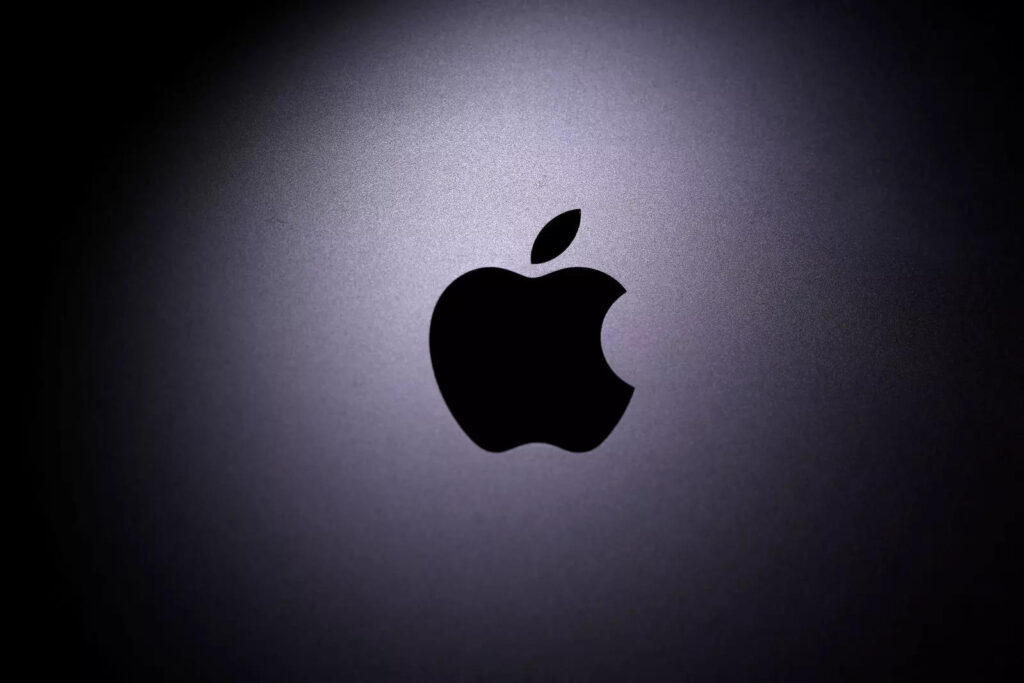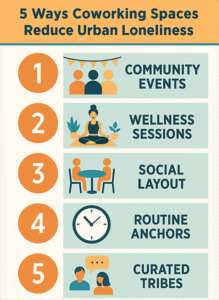Have you ever thought about how Apple makes money? In this article, we explain the depths of the Apple Business Model to help you learn how the brand has built an massive business empire.
Apple Inc. is a multinational technology company based in Cupertino, California, that has revolutionized the world through its innovative and iconic products. Established in 1976 by Steve Jobs, Steve Wozniak, and Ronald Wayne, Apple has since grown into one of the world’s most valuable and influential companies. Apple designs, manufactures, and markets a wide range of consumer electronics, software, and online services, with its flagship products being the iPhone, iPad, Mac, Apple Watch, and Apple TV.
In this blog post, we will explore the business model of Apple using Alexander Osterwalder’s Business Model Canvas. The canvas is a strategic management tool that presents a company’s business model in a visual and comprehensive manner, breaking it down into nine key components: customer segments, value propositions, channels, customer relationships, revenue streams, key resources, key activities, key partnerships, and cost structure. By analyzing Apple’s business model through this lens, we will uncover the secrets behind its success and longevity in the competitive technology industry.
The Story of Apple
The story of Apple began in the 1970s when two young visionaries, Steve Jobs and Steve Wozniak, set out to change the world. Both had a passion for technology and a shared belief that personal computers could empower people to create, learn, and communicate in ways never before possible. They met in 1971 through a mutual friend and began working on various projects, including the infamous “blue box” that allowed users to make free long-distance phone calls.
The idea for Apple was born in 1976 when Wozniak designed the Apple I, a personal computer that was relatively affordable and easy to use. Jobs saw the potential in Wozniak’s invention and convinced him to start a company to sell the Apple I. They were joined by Ronald Wayne, who provided administrative support and helped draft the company’s first logo and legal documents. On April 1, 1976, Apple Computer, Inc. was officially founded.
The Apple I was initially sold as a kit that users had to assemble themselves. However, with the introduction of the Apple II in 1977, the company shifted its focus to producing fully assembled computers. The Apple II was a game-changer, featuring a color display, a user-friendly interface, and a sleek design. It quickly became a bestseller, establishing Apple as a major player in the burgeoning personal computer industry.
Over the years, Apple has faced numerous challenges, including competition from IBM and Microsoft, internal power struggles, and the temporary departure of Steve Jobs. However, the company has continuously reinvented itself and its products, driven by its founders’ unwavering commitment to innovation and design excellence. Today, Apple stands as a testament to the power of creativity, perseverance, and vision in business.
Now that we have a brief understanding of Apple’s history, let us delve into its business model using Alexander Osterwalder’s Business Model Canvas.
- Customer Segments
Apple targets a broad range of customer segments, including individual consumers, businesses, educational institutions, and governments. The company’s products and services cater to various needs, from communication and entertainment to productivity and creativity. Some of the main customer segments include:
- Tech-savvy individuals who value high-quality products and cutting-edge technology
- Creative professionals, such as graphic designers, musicians, and filmmakers
- Students and educators who use Apple devices for learning and teaching
- Businesses of all sizes that rely on Apple products for their daily operations
- Value Propositions
Apple’s value propositions revolve around design, innovation, and user experience. The company has consistently delivered products and services that are not only technologically advanced but also aesthetically pleasing and easy to use. Some of the key value propositions that differentiate Apple from its competitors include:
- Superior design and build quality: Apple products are known for their sleek and minimalist design, as well as their durability and premium materials. This attention to detail has made Apple devices highly desirable and instantly recognizable.
- Seamless integration and ecosystem: Apple’s ecosystem of hardware, software, and services is designed to work seamlessly together, providing a smooth and consistent user experience across all devices. This integration encourages customer loyalty and encourages users to purchase multiple Apple products.
- Innovation and technological advancements: Apple has a track record of introducing groundbreaking technologies and features, such as the first graphical user interface on the Macintosh, the iPod’s click wheel, and the iPhone’s multi-touch display. This commitment to innovation has kept Apple at the forefront of the industry.
- User-friendly software and interfaces: Apple’s operating systems, macOS and iOS, are renowned for their intuitive and user-friendly design, making it easy for users of all skill levels to navigate and use their devices effectively.
- Brand prestige and status: Apple has cultivated a strong and loyal brand following, with many customers seeing ownership of an Apple product as a status symbol. The company’s focus on design, innovation, and marketing has contributed to this perception.
- Channels
Apple uses a combination of direct and indirect channels to distribute its products and services to customers. These channels include:
- Retail stores: Apple operates over 500 retail stores in more than 25 countries, providing customers with a unique shopping experience where they can test and purchase Apple products and receive expert assistance from knowledgeable staff.
- Online store: Apple’s e-commerce platform allows customers to purchase products and services directly from the company’s website, with the option for home delivery or in-store pickup.
- Authorized resellers and carriers: Apple partners with a network of authorized resellers and carriers to sell its products in various countries, ensuring broad availability and distribution.
- App Store and iTunes Store: Apple’s digital marketplaces allow customers to download and purchase apps, music, movies, TV shows, and other digital content directly onto their devices.
- Customer Relationships
Apple has built strong customer relationships through its emphasis on customer service, support, and user experience. Some of the ways the company fosters these relationships include:
- Retail store experience: Apple Stores are designed to be welcoming and interactive spaces, where customers can try out products, attend workshops and events, and receive personalized assistance from the company’s highly trained staff.
- Genius Bar: The Genius Bar is a dedicated support center located within Apple Stores, where customers can receive technical support and repair services for their devices.
- AppleCare: Apple offers extended warranty and support plans for its products, providing customers with peace of mind and additional protection for their devices.
- Online resources: Apple’s website features extensive resources, such as user guides, tutorials, and forums, to help customers get the most out of their devices and troubleshoot any issues.
- Revenue Streams
Apple generates revenue from several sources, including:
- Product sales: The company’s primary revenue stream comes from the sale of its hardware products, such as iPhones, iPads, Macs, Apple Watches, and Apple TVs.
- Services: Apple’s growing services segment includes revenue from the App Store, iTunes Store, Apple Music, Apple Pay, and iCloud.
- Accessories and peripherals: Apple also sells various accessories and peripherals for its devices, such as cases, cables, and adapters.
- Licensing and royalties: Apple earns royalties from licensing its technology and intellectual property to third parties.
- Key Resources
Some of Apple’s key resources include:
- Intellectual property: Apple’s extensive portfolio of patents, trademarks, and copyrights protect its innovations and give the company a competitive advantage.
- Supply chain and manufacturing: Apple’s sophisticated supply chain and relationships with manufacturers enable the company to source components, assemble products, and scale production efficiently.
- Design and engineering talent: Apple’s success relies heavily on its ability to innovate and create compelling products. The company employs a talented team of designers, engineers, and researchers who drive product development and technological advancements.
- Brand equity and reputation: Apple’s strong brand image, customer loyalty, and reputation for quality and innovation are key resources that contribute to its success in the marketplace.
- Key Activities
Apple’s key activities revolve around designing, developing, and manufacturing its products, as well as marketing and distributing them to customers. These activities include:
- Research and development: Apple invests heavily in R&D to explore new technologies, develop innovative features, and improve existing products.
- Product design and engineering: The company’s design and engineering teams work closely together to create user-friendly and aesthetically pleasing products that meet customer needs.
- Manufacturing and assembly: Apple partners with manufacturers to produce and assemble its products at scale, ensuring high-quality standards and efficient production.
- Marketing and advertising: Apple’s marketing efforts are focused on creating brand awareness, generating product interest, and driving sales. The company uses a mix of traditional and digital media, as well as high-profile product launches and events, to promote its products.
- Distribution and logistics: Apple manages a complex distribution and logistics network to deliver its products to customers globally through various channels, such as retail stores, online platforms, and authorized resellers.
- Key Partnerships
Apple has formed several key partnerships to support its business operations and enhance its product offerings. Some of these partnerships include:
- Manufacturing partners: Apple relies on a network of manufacturing partners, such as Foxconn and Pegatron, to produce and assemble its products. These partnerships enable Apple to scale production and maintain quality standards while focusing on its core competencies.
- Component suppliers: The company works with a variety of component suppliers, such as Samsung, LG, and Intel, to source the necessary parts for its devices. These partnerships help Apple secure access to cutting-edge technology and maintain a competitive edge.
- Content providers and developers: Apple collaborates with content providers, such as music labels, movie studios, and app developers, to offer a wide range of digital content and services through its platforms, like the App Store and iTunes Store.
- Authorized resellers and carriers: Apple partners with authorized resellers and carriers to distribute its products in different markets, expanding its global reach and customer base.
- Cost Structure
Apple’s cost structure is composed of various elements, including:
- Research and development: As a technology-driven company, Apple invests heavily in R&D to stay ahead of the competition and drive product innovation.
- Manufacturing and production: The company incurs costs related to manufacturing and assembling its products, such as labor, materials, and equipment.
- Marketing and advertising: Apple spends a significant amount on marketing and advertising to promote its products and maintain its brand image.
- Distribution and logistics: The company’s global distribution network and logistics operations generate costs related to transportation, warehousing, and inventory management.
- Employee salaries and benefits: Apple’s talented workforce is a significant expense, with the company offering competitive salaries and benefits to attract and retain top talent.
Apple’s business model, as analyzed through Alexander Osterwalder’s Business Model Canvas, reveals the company’s unwavering commitment to innovation, design, and customer experience. By understanding its target customer segments, delivering compelling value propositions, leveraging strategic partnerships, and managing its key resources and activities, Apple has managed to maintain its position as a leading technology company.
The company’s ongoing success is a testament to the vision and perseverance of its founders, as well as the dedication and talent of its employees. By continuously evolving and adapting to changing market conditions and customer needs, Apple has managed to stay ahead of its competitors and create a loyal customer base that spans across the globe.
As a result, Apple serves as an excellent example for entrepreneurs and business leaders seeking to build a successful and sustainable business in today’s fast-paced and competitive landscape. By focusing on delivering exceptional value to customers, fostering strong relationships, and constantly pushing the boundaries of innovation and design, companies can learn from Apple’s example and create their own unique and successful business models.
In summary, Apple’s business model, as analyzed through the Business Model Canvas, can be broken down into nine key components:
- Customer Segments: A broad range of consumers, businesses, and institutions
- Value Propositions: Superior design, seamless integration, innovation, user-friendly software, and brand prestige
- Channels: Retail stores, online store, authorized resellers, carriers, App Store, and iTunes Store
- Customer Relationships: Retail store experience, Genius Bar, AppleCare, and online resources
- Revenue Streams: Product sales, services, accessories, and licensing and royalties
- Key Resources: Intellectual property, supply chain and manufacturing, design and engineering talent, and brand equity
- Key Activities: Research and development, product design, manufacturing, marketing, and distribution
- Key Partnerships: Manufacturing partners, component suppliers, content providers, and authorized resellers
- Cost Structure: R&D, manufacturing and production, marketing and advertising, distribution and logistics, and employee salaries and benefits
By understanding and applying the lessons from Apple’s business model, entrepreneurs and business leaders can develop a clear roadmap for success and build companies that are not only profitable but also make a meaningful impact on the world.
Did you know? Creators like to use our coworking space in Bangalore.
Learn more about our coworking space on YouTube where we talk about a variety of topics including personal finance, entrepreneurship, business and life.
Did you know? We also have a private theater in Bangalore.




